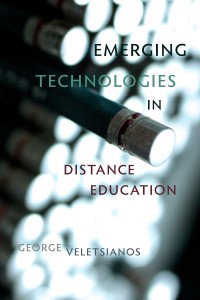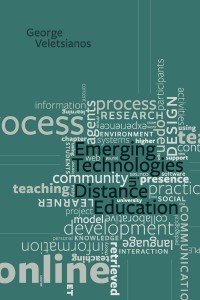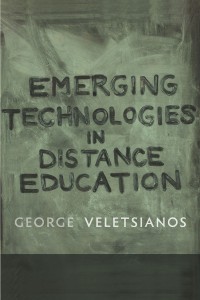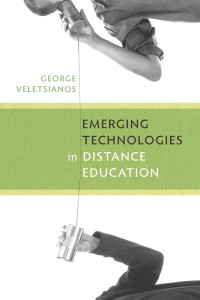My edited book, Emerging Technologies in Distance Education, has just been published from Athabasca University Press, Canada’s leading publisher of Open Access, peer-reviewed, scholarly publications! Go get your free copy from the AU site above, and if you want to support the great work that Athabasca University Press is doing, then purchase the paperback volume (disclaimer: I earn a minute stream of royalty fees per copy).
A summary of the book follows:
A one-stop knowledge resource, Emerging Technologies in Distance Education showcases the international work of research scholars and innovative distance education practitioners, who use emerging interactive technologies for teaching and learning at a distance. This widely anticipated book harnesses the dispersed knowledge of international experts who highlight pedagogical, organizational, cultural, social, and economic factors that influence the adoption and integration of emerging technologies in distance education. Emerging Technologies in Distance Education provides expert advice on how educators can launch effective and engaging distance education initiatives, in response to technological advancements, changing mindsets, and economic and organizational pressures. The volume goes beyond the hype surrounding Web 2.0 technologies and highlights the important issues that researchers and educators need to consider to enhance educational practice.
Individual chapters are as follows:
PART 1: Foundations of Emerging Technologies in Distance Education
1. A definition of emerging technologies for education | George Veletsianos
2. Theories for Learning with Emerging Technologies | Terry Anderson
3. Imagining multi-roles in Web 2.0 Distance Education | Elizabeth Wellburn & BJ Eib
4. Beyond distance and time constraints: applying social networking tools and Web 2.0 approaches in distanceeducation | Mark J. W. Lee & Catherine McLoughlin
PART 2: Learning Designs for Emerging Technologies
5. “Emerging”: A re-conceptualization of contemporary technology design and integration | The Learning Technologies Collaborative
6. Developing Personal Learning Networks for Open & Social Learning | Alec Couros
7. Creating a Culture of Community in the Online Classroom Using Artistic Pedagogical Technologies | Beth Perry & Margaret Edwards
8. Structured Dialogue Embedded within Emerging Technologies | Yiannis Laouris, Gayle Underwood, Romina Laouri, Aleco Christakis
PART 3: Social, Organizational, & Contextual Factors in Emerging Technologies Implementations
9. Personal Learning Environments | Trey Martindale & Michael Dowdy
10. Open source course management systems in distance education | Andrew Whitworth & Angela Benson
11. Implementing Wikis in higher education institutions: the case of the Open University of Israel | Hagit Meishar-Tal, Yoav Yair and Edna Tal-Elhasid
12. The Use of Web Analytics in the Design and Evaluation of Distance Education | P. Clint Rogers, Mary R. McEwen & SaraJoy Pond
13. New communication options: A renaissance in IP use | Richard Caladine, Trish Andrews, Belinda Tynan, Robyn Smyth, & Deborah Vale
PART 4: Learner-learner, Learner-Content, & Learner-Instructor Interaction & Communication with Emerging Technologies
14. Using Social Media to Create a Place that Supports Communication | Rita Kop
15. Technical, Pedagogical and Cultural Considerations for Language Learning in MUVEs / Charles Xiaoxue Wang, Brendan Calandra & Youngjoo Yi
16. Animated Pedagogical Agents and Immersive Worlds: Two Worlds Colliding / Bob Heller & Mike Procter





